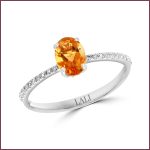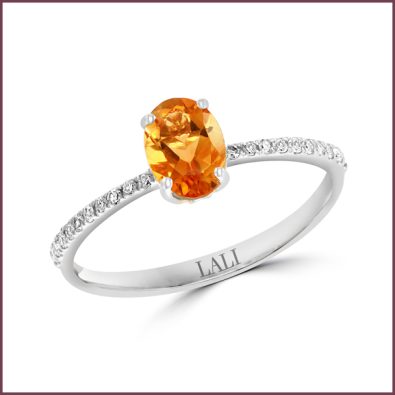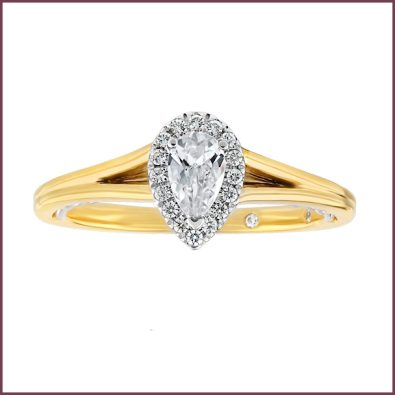If You Build Pearls, They Will Come
If you build it they will come, hails jeweler Rakhi Singadia Narwani, about the pearl department at Barron’s Fine Jewelry in Snellville, Georgia.
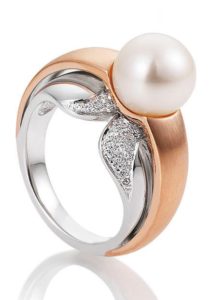 “We’ve always carried some pearls, primarily the basics, traditional pearl strands, studs, solitaires with diamond,” explains Narwani. “But we’ve noticed in the past few years that our core pearl business has not grown, and our customers wanted more, more fashion forward pieces in pearls.”
“We’ve always carried some pearls, primarily the basics, traditional pearl strands, studs, solitaires with diamond,” explains Narwani. “But we’ve noticed in the past few years that our core pearl business has not grown, and our customers wanted more, more fashion forward pieces in pearls.”
Barron’s brought in the brand Breuning and it’s fashion pearl jewelry that has a German aesthetic in clean, modern designs featuring a variety of pearls set in gold, says Narwani. “Then, we added Imperial Pearl about a year ago, from price point pearl sets that make great gifts to South Sea pearl strands selling for tens of thousands of dollars.”
Filling two 6-foot cases with pearls—one high-end, the other more fashion forward, the jeweler mixes strands and jewelry in different varieties. “Our pearl business continues to grow with sales across the board,” says Narwani. “It’s a great profit center; with great margins, I recommend pearls to any jeweler. There’s so much to choose from, you just have to find the right mix for your customers.” Partnering with strong brands offering sale, display, marketing, and social media support help to call attention to the category. She also is a fan of vendors who do trunk shows and stock balancing to keep inventory fresh.
Pearls are probably one of the easiest gems to get involved with and put together a case for a relatively inexpensive investment with the opportunity to turn a nice profit, says Ray Mastoloni for Mastoloni Pearls, New York City, who advocates a mix of basics seasoned with a good selection of fashion and statement pieces.
Understand Your Customers
To determine how to build a profitable pearl department, know your customers, says Kathy Grenier, marketing director Imperial Pearl, Providence, Rhode Island. “If your average sale across the board is $300, you’re not going to put in a $300,000 piece. Identify whom you want to attract. What are your expectations? What do you have and what can’t you do without?” She also suggests looking to the competition to see what they’re doing as you strategize your approach.
Merchandise in Levels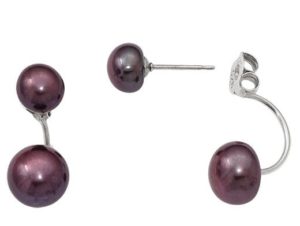
Stock the basics—strands, earrings, rings and bracelets that are traditional and never go out of style, advises Cora-Lee Colaizzi, director of marketing and catalogs and senior merchandiser Quality Gold, Fairfield, Ohio. “If you don’t have the basics, the consumer will go elsewhere.” But she advocates stocking multiple levels within your price points. Include a selection of fashion forward styles and higher end pieces with diamonds and gemstones, as well as box sets of pearls with polished ball studs or earring jackets for alternative gift options, and a well-balanced children’s line in multiple colors of pearls.
Invest in Brands
Consider partnering with strong brands that can deliver well-developed marketing support, advocates Wendy Fox, senior director of sales independent division for Honora, a Richline brand based in New York City. “Brands can really help jewelers make a statement. We offer our retailers and prospective customers a complete product kit with all our branded assets, product shots, everything they need to market our merchandise.”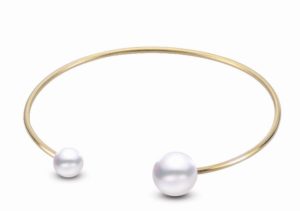
Why reinvent the wheel? Grenier cites great traction for Imperial’s latest ad campaign featuring Miss Universe 2012 Olivia Culpo of Rhode Island, where the brand is based. Barron’s has large artwork of Culpo draped in Imperial pearls in its front window and in-store that Narwani says has been an attention grabber and conversation starter. In addition to marketing tools, Grenier cites great success for jewelers with trunk shows that not only subsidize inventory for events, but also provide a great way to see how different styles might sell.
Mastoloni hails sales training paramount for jewelers to succeed in the pearl business, which brands like Mastoloni, Imperial and Honora provide. “Training is key, sales associates need to understand how to talk about, work with, and sell pearls.” Grenier adds that the Cultured Pearl Association of America also offers pearl advertising, marketing and training support.
Create Pearl Presence
It takes more than just buying some pearls and putting them in a showcase to be successful in this category, says Grenier. “Become a destination for pearls. Create a cohesive pearl department and promote it. It’s all about presentation and placing positive attention on your offerings. Be dramatic, take chances, and shift perspective to captivate customers. Jewelers create their own boundaries and miss opportunities to excite and engage consumers. I challenge our jewelers to change one thing in their store and see what happens.”
Communicate to customers that pearls are the perfect wardrobe staple, the go-to-go-with-everything accessory that is great to build a wardrobe on and always in style, promotes designer Sara Blaine, a Benchmark brand partner, based in Atlanta, Georgia. “Create a large neck fixture where you can mix different pieces—style pearls with other jewelry in your store and change it up everyday. Show 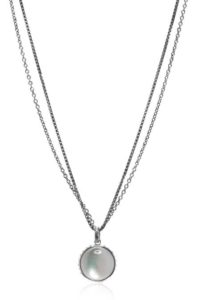 how they can wear pearls, especially how well pearls layer with other things. Also, encourage your sales staff to wear pearls in this way.”
how they can wear pearls, especially how well pearls layer with other things. Also, encourage your sales staff to wear pearls in this way.”
Pearl Talk
Social media is a great resource for promoting pearls, with brands like Honora, Imperial and Mastoloni posting lots of pearl images and style and gift information on multiple platforms. “We devote a lot of attention to digital marketing and social media,” says Fox. “We post and repost and encourage our retailers to do the same, not only for promotional purposes, but also to test market products.” Grenier concurs that social media is an immediate focus group, a great way to get feedback on ideas and new products, while also keeping the pearl conversation going between store visits.
